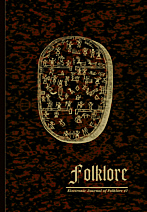Orthodoxy and Orthodox Sacral Buiuldings in Estonia from the 11th to the 19th Centuries
Orthodoxy and Orthodox Sacral Buiuldings in Estonia from the 11th to the 19th Centuries
Author(s): Jaanus PlaatSubject(s): Architecture
Published by: Eesti Kirjandusmuuseum
Keywords: Estonia; Orthodoxy; Orthodox sacral buildings; poluverniks; Setomaa (Setoland); Seto tsässons
Summary/Abstract: The article provides an overview of the history of Orthodoxy, reaching the territories of Estonia and Setomaa (Petseri/Pechersky District) from Russia, as of the 11th century up until the 1840s, when the Estonian Lutherans began to massively convert to the Russian Orthodox Church. Prior to this changing- of-church-movement, Orthodox and Old Believers’ congregations in Estonia primarily comprised the Russians living or temporarily residing in Estonia, and in Setomaa – the Seto people and Russians. In addition, the so-called poluverniks of Virumaa area are also dealt with. The article focuses on the establishment of Orthodox churches, convents, monasteries and chapels (incl. Seto tsässons) in the territory of the present-day Republic of Estonia and the Petseri/Pechersky District in the Pskov Oblast, Russia (the habitat of Seto people). Photographs of the oldest preserved Orthodox sacral buildings have been taken during the fieldwork of 2007–2010.
Journal: Folklore: Electronic Journal of Folklore
- Issue Year: 2011
- Issue No: 47
- Page Range: 7-42
- Page Count: 36
- Language: English

